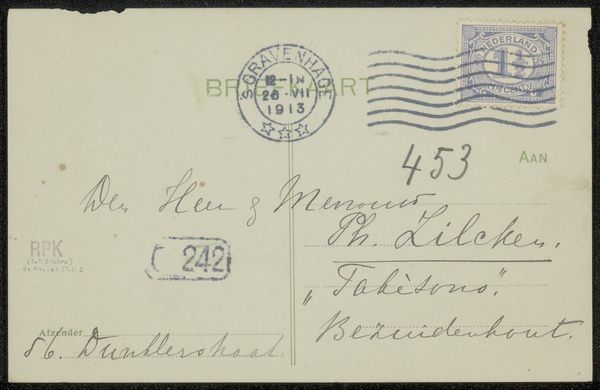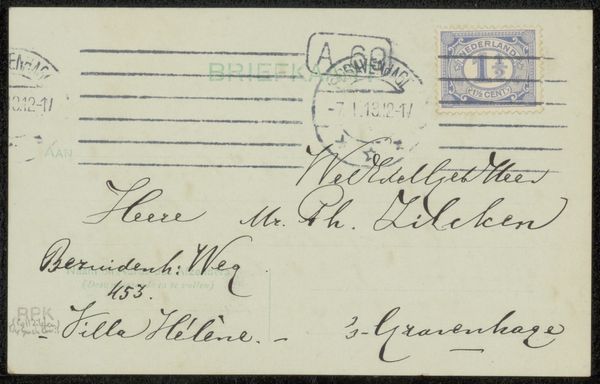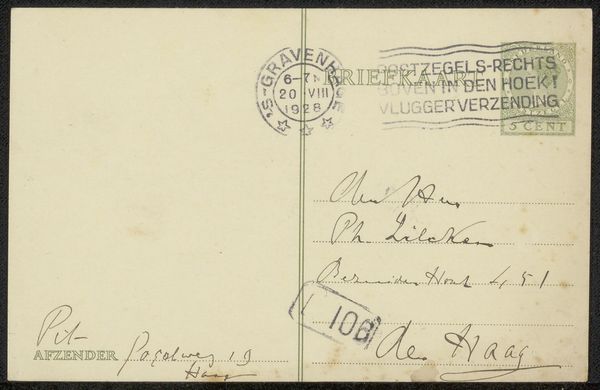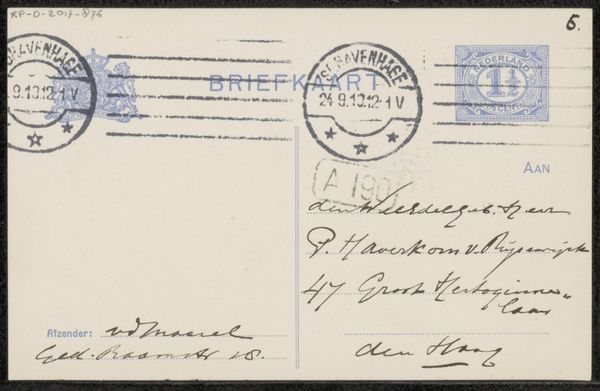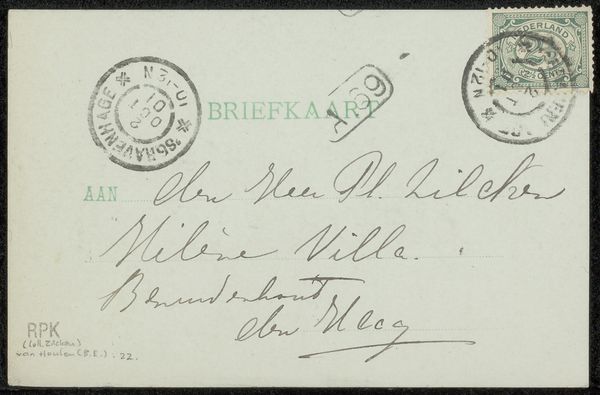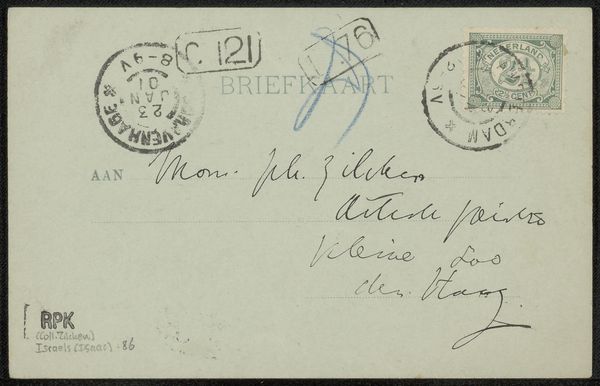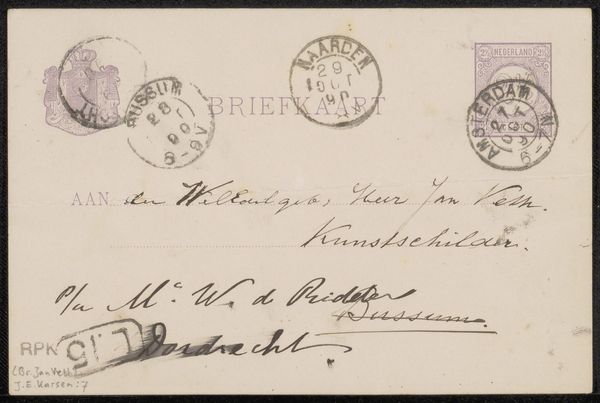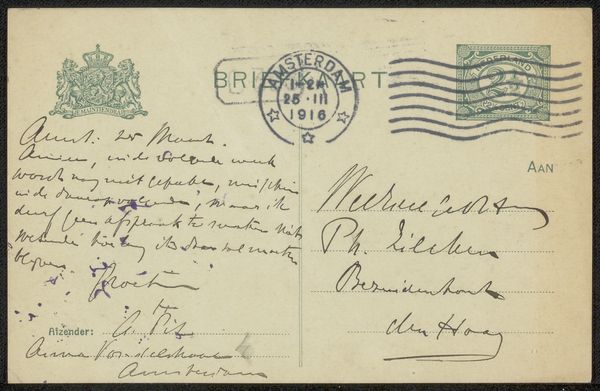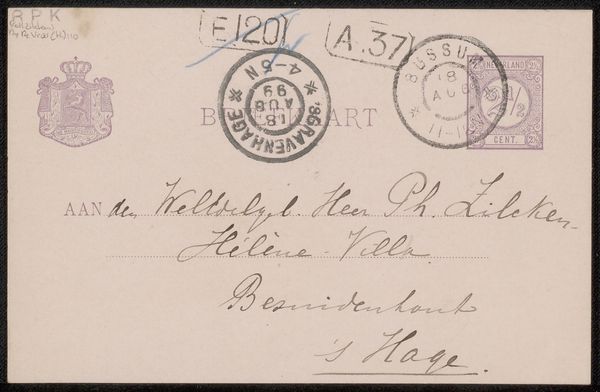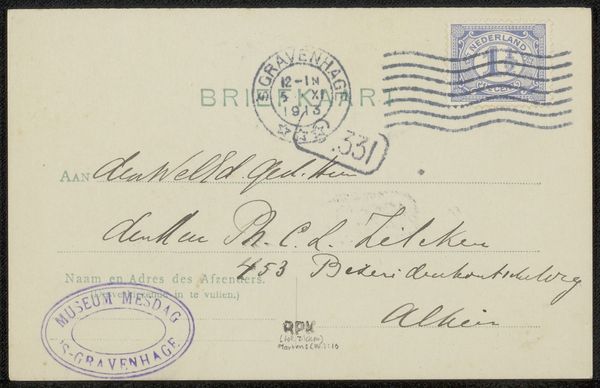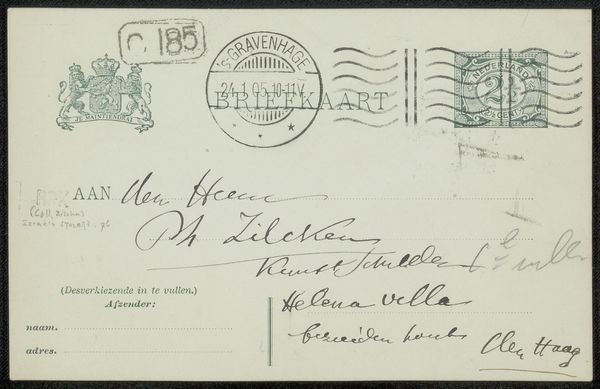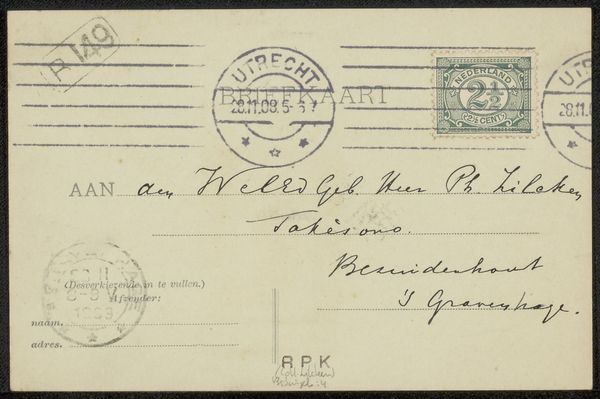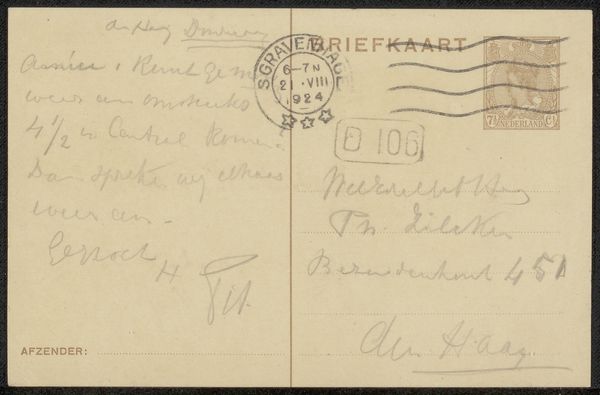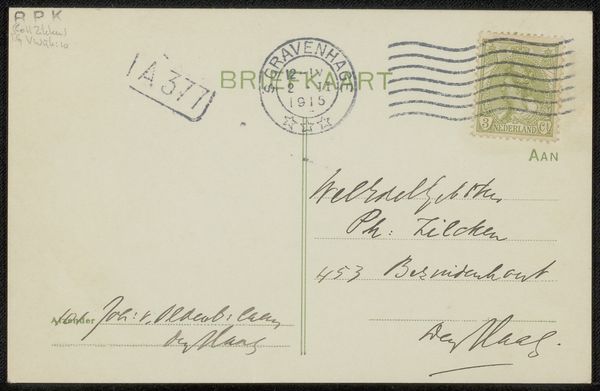
drawing, paper, ink, pen
#
portrait
#
drawing
#
script typography
#
hand-lettering
#
hand drawn type
#
hand lettering
#
paper
#
ink
#
pen work
#
pen
#
calligraphy
Copyright: Rijks Museum: Open Domain
Curator: Alright, let’s have a look at this piece attributed to Annie Maris, a postcard titled "Briefkaart aan Philip Zilcken", possibly from sometime between 1913 and 1928. It's pen and ink on paper. My first thought goes to how utilitarian yet refined this is. Editor: Yes, I immediately focus on the script, that beautifully rendered hand-lettering. It tells a story of practical communication, a brief message delivered in an age before digital scripts and instant communication stripped us from crafting our own correspondence. Curator: Indeed, we see that inscribed labor quite distinctly. Note how the production of this postcard likely mirrors much broader economic trends, this piece of mail serving as its own artifact within the rise of print and communication culture. Did the accessibility of these new materials expand artistic practices or were artists, such as Annie Maris, simply meeting a popular demand for handwritten correspondences? Editor: That's a very valid question. The card itself demonstrates a particular level of literacy and education in a moment when literacy rates were transforming the sociopolitical landscape. Who could afford this exchange? To whom? Curator: If we consider that the recipient, Philip Zilcken, is referred to as a "Kunstschilder," or artist, it begs the question: How was this postcard positioned in a community of other artists? And was the intention that this missive remain more private? Editor: Look closer. The postmark indicates it was sent from The Hague in 1913. And, by examining the cancellation mark with the date, you have another entry point into thinking about networks, locations, and exchange among these artists. That postmark isn’t just an official mark; it's integral to the piece. Curator: Absolutely. Moreover, thinking about its status as both art and document, its potential mass production, versus the uniqueness imparted by handwriting… Editor: Exactly, considering that tension inherent in such material speaks to its cultural place and its purpose as more than just a correspondence vehicle. I also wonder about the artist’s relationship to Annie Maris, a glimpse into the dynamic world of Dutch artists. Curator: It certainly broadens our view of their practices. A quick but valuable window, indeed. Editor: A tangible connection, offering up new research trajectories for those of us studying the sociopolitical side of these works.
Comments
No comments
Be the first to comment and join the conversation on the ultimate creative platform.
